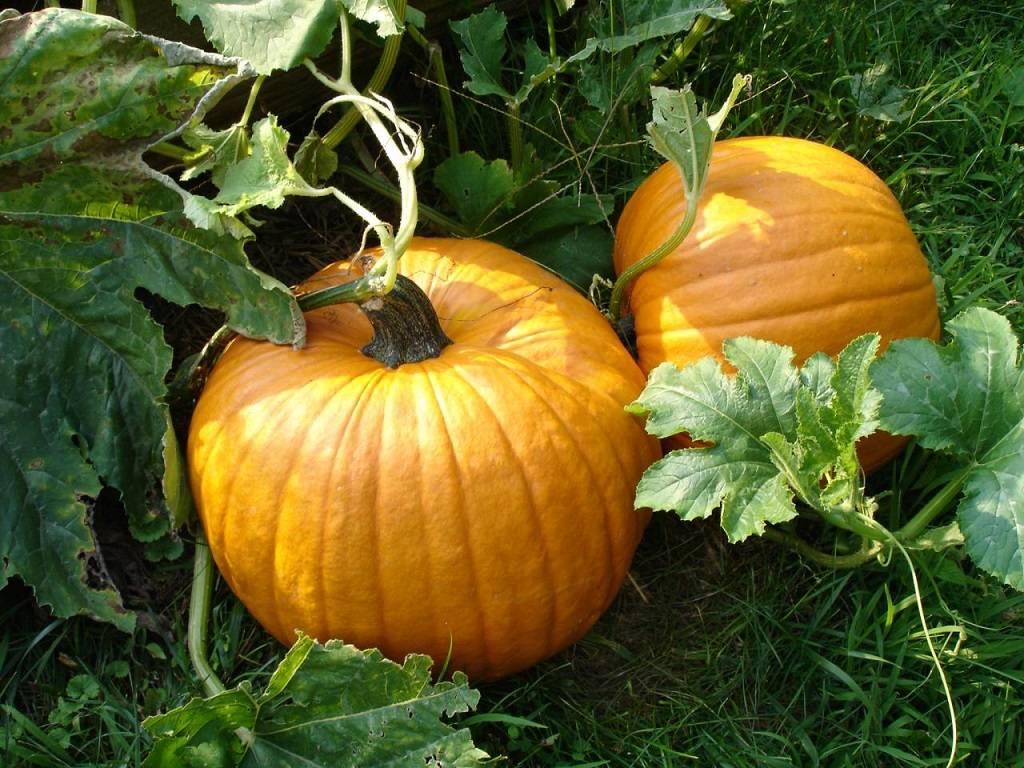
Pumpkins (Cucurbita maxima) are incredibly simple to cultivate, making them an ideal first-time project. Small pumpkins may be used as a bird feeder or a nest by simply hollowing them out, allowing them to dry, painting with a few coats of varnish, and attaching a loop of string.
In addition, pumpkin seeds can be dried, painted with acrylics, and used by children to create artwork or jewellery. Growing pumpkins in your yard may be used to produce excellent soups and pies, or simply roasted with olive oil and herbs, as you probably already know.
How to grow and harvest pumpkin
Sowing the seed and preparing the planting hole
The perfect time to start sowing is in May or early June. Angela Slater, a gardening expert at Hayes Garden World, recommends sowing outside after the soil temperature rises 65-degree F and then covering with a cloche. “Place three seeds in a row, then weed out the two weakest. Sow them half an inch deep on their side,” Angela advises.
Give your pumpkin lots of room to develop, ideally in well-draining, moisture-retentive soil in full sun but also out of strong winds.
Angela recommends digging over the planting hole and adding a generous forkful of well-rotted farmyard manure as well as a handful of a general-purpose fertilizer, such as Growmore.
“Create a little mound and place the pumpkin on top of it. This keeps the water from collecting around the plant's neck, preventing it from decaying. Pumpkins require a lot of room, about 20 sq ft per plant, so spread them out six feet apart. Push a 6-inch-long piece of pipe or an old plant pot into the soil beside the plant to collect the water. This guarantees that the water reaches the plant's roots rather than sitting around it.”
Can pumpkins be grown in containers?
Yes, anyone can grow pumpkins in pots, but they must be at least 18 inches deep and wide. A good quality peat-free compost, a forkful of well-rotted manure at the bottom, and a handful of Growmore added to the compost, according to Angela. However, Angela advises, "the trouble with growing in a container is that you have to be very vigilant about watering during hot spells; when they are at full growth, they may require watering three times a day."
Feeding and Aftercare
To encourage the formation of flowers and fruit, feed every 10 days with a high potash tomato fertilizer once the first fruits appear.
To keep fruits off damp soil and prevent them from turning black on one side, set them on a bed of straw or a piece of tile. It is necessary to keep them well-watered. 'If you want to grow prize-winning giants, remove all except one of the small fruits from each plant,' Angela says.
Harvesting and storage
When the pumpkins have stopped growing and acquired a bright orange color, you should pluck them in September or October. Allow 10-14 days for the skin to bake and harden in a hot, sunny location. This means they'll be less prone to rot during the winter, which is vital if you plan on storing them.
When it comes to storing your pumpkins, store them in a frost-free area during the winter and they'll last three to six months.
Growing pumpkins: potential problems
What if there isn't any fruit? When the temperature gets too cold, this might happen due to poor pollination. “They'll get pollinated as soon as the weather heats up, and you'll only get fruit a little later than usual,” Angela adds.
Another issue is powdery mildew, which is caused by insufficient airflow and a stressed plant, like allowing it to dry out. Angela also recommends keeping an eye out for botrytis (grey mould), a disorder caused by moist, humid conditions. If this happens, you should take out any infected parts and burn them, making sure to clean up any infected material that has fallen.
















